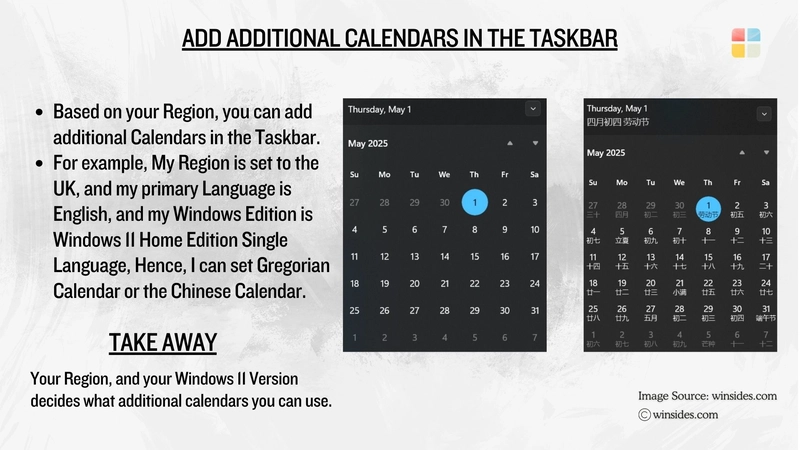Tutorial: Integrating Crystal Reports in C# .NET Applications
This tutorial will guide you through the process of integrating a Crystal Report into a Windows Forms application using C# and .NET. Prerequisites: Visual Studio: You'll need Visual Studio installed. This tutorial assumes you are using a relatively recent version (e.g., 2019, 2022). SAP Crystal Reports runtime engine for .NET Framework: This needs to be installed separately. You can download it from the SAP website. Search for "SAP Crystal Reports runtime engine for .NET Framework" and download the appropriate version for your system architecture (32-bit or 64-bit). Make sure to install this before proceeding. Steps: 1. Create a New Windows Forms App (.NET Framework) Project: Open Visual Studio. Click on "Create a new project." Search for and select "Windows Forms App (.NET Framework)" (make sure it's the .NET Framework version, not the .NET version). Click "Next." Give your project a name (e.g., CrystalReportsApp) and choose a location. Click "Create." 2. Add the Crystal Reports NuGet Package: In Solution Explorer (usually on the right side of Visual Studio), right-click on your project name. Select "Manage NuGet Packages..." In the NuGet Package Manager window, click on the "Browse" tab. Search for "Crystal Reports for Visual Studio." Install the package named "SAP Crystal Reports for Visual Studio 20xx" (the "20xx" will depend on your Visual Studio version). Click "Install" and accept any license agreements. 3. Design Your Crystal Report: For this tutorial, let's create a simple report. You'll typically design your reports using the Crystal Reports Designer. In Solution Explorer, right-click on your project. Go to "Add" -> "New Item..." In the "Add New Item" dialog, search for "Crystal Report." Select "Crystal Report" and give it a name (e.g., SimpleReport.rpt). Click "Add." You'll be prompted with the Crystal Reports Gallery. For a basic example, choose "As a Blank Report" and click "OK." Adding Fields: In the Field Explorer (usually on the left), you can create database fields, formula fields, parameter fields, etc. For this simple example, let's create a couple of formula fields to display some static text. Right-click on "Formula Fields" and select "New..." Name the first formula Text1 and in the formula editor, enter "Hello Crystal Reports!". Save and close. Create another formula named Text2 with the formula "Integration Successful!". Save and close. Designing the Layout: Drag and drop the Text1 and Text2 formula fields from the Field Explorer onto the Report Header or Details section of the report design surface. Arrange them as you like. Save your report (SimpleReport.rpt). 4. Add the CrystalReportViewer Control to Your Form: Open your Form1.cs in the Design view. In the Toolbox (usually on the left), find the "CrystalReportViewer" control (it should appear after installing the NuGet package). Drag and drop the CrystalReportViewer control onto your Form1. Resize it as needed to fill the form. 5. Write the C# Code to Load and Display the Report: Double-click on your Form1 in the Solution Explorer to open its code-behind (Form1.cs). Add the following using directives at the top of your code file: using CrystalDecisions.CrystalReports.Engine; using CrystalDecisions.Windows.Forms; In the Form1 class, add the following code within the Form1_Load event handler (you might need to create this event handler if it doesn't exist by double-clicking on the form in the Design view): private void Form1_Load(object sender, EventArgs e) { ReportDocument report = new ReportDocument(); // Replace "SimpleReport.rpt" with the actual name of your report file string reportPath = System.IO.Path.Combine(Application.StartupPath, "SimpleReport.rpt"); try { report.Load(reportPath); crystalReportViewer1.ReportSource = report; crystalReportViewer1.RefreshReport(); } catch (Exception ex) { MessageBox.Show($"Error loading report: {ex.Message}", "Error", MessageBoxButtons.OK, MessageBoxIcon.Error); } } Explanation of the Code: ReportDocument report = new ReportDocument();: Creates a new instance of the ReportDocument class, which represents your Crystal Report. string reportPath = System.IO.Path.Combine(Application.StartupPath, "SimpleReport.rpt");: Constructs the full path to your report file. Application.StartupPath gets the directory where your application executable is running. We assume the SimpleReport.rpt file will be in the same directory (it will be copied there by default). report.Load(reportPath);: Loads the Crystal Report file into the ReportDocument object. crystalReportViewer1.ReportSource = report;: Assigns the loaded report to the ReportSource property of your CrystalReportViewer control. This tells the viewer which report to display. crystalReportViewer1.RefreshReport();: Refreshes the viewer to display the loaded report. try...catch: This block handles potential errors that might

This tutorial will guide you through the process of integrating a Crystal Report into a Windows Forms application using C# and .NET.
Prerequisites:
- Visual Studio: You'll need Visual Studio installed. This tutorial assumes you are using a relatively recent version (e.g., 2019, 2022).
- SAP Crystal Reports runtime engine for .NET Framework: This needs to be installed separately. You can download it from the SAP website. Search for "SAP Crystal Reports runtime engine for .NET Framework" and download the appropriate version for your system architecture (32-bit or 64-bit). Make sure to install this before proceeding.
Steps:
1. Create a New Windows Forms App (.NET Framework) Project:
- Open Visual Studio.
- Click on "Create a new project."
- Search for and select "Windows Forms App (.NET Framework)" (make sure it's the .NET Framework version, not the .NET version).
- Click "Next."
- Give your project a name (e.g.,
CrystalReportsApp) and choose a location. - Click "Create."
2. Add the Crystal Reports NuGet Package:
- In Solution Explorer (usually on the right side of Visual Studio), right-click on your project name.
- Select "Manage NuGet Packages..."
- In the NuGet Package Manager window, click on the "Browse" tab.
- Search for "Crystal Reports for Visual Studio."
- Install the package named "SAP Crystal Reports for Visual Studio 20xx" (the "20xx" will depend on your Visual Studio version). Click "Install" and accept any license agreements.
3. Design Your Crystal Report:
For this tutorial, let's create a simple report. You'll typically design your reports using the Crystal Reports Designer.
- In Solution Explorer, right-click on your project.
- Go to "Add" -> "New Item..."
- In the "Add New Item" dialog, search for "Crystal Report."
- Select "Crystal Report" and give it a name (e.g.,
SimpleReport.rpt). Click "Add." -
You'll be prompted with the Crystal Reports Gallery. For a basic example, choose "As a Blank Report" and click "OK."
-
Adding Fields: In the Field Explorer (usually on the left), you can create database fields, formula fields, parameter fields, etc. For this simple example, let's create a couple of formula fields to display some static text.
- Right-click on "Formula Fields" and select "New..."
- Name the first formula
Text1and in the formula editor, enter"Hello Crystal Reports!". Save and close. - Create another formula named
Text2with the formula"Integration Successful!". Save and close.
-
Designing the Layout: Drag and drop the
Text1andText2formula fields from the Field Explorer onto the Report Header or Details section of the report design surface. Arrange them as you like. - Save your report (
SimpleReport.rpt).
-
Adding Fields: In the Field Explorer (usually on the left), you can create database fields, formula fields, parameter fields, etc. For this simple example, let's create a couple of formula fields to display some static text.
4. Add the CrystalReportViewer Control to Your Form:
- Open your Form1.cs in the Design view.
- In the Toolbox (usually on the left), find the "CrystalReportViewer" control (it should appear after installing the NuGet package).
- Drag and drop the
CrystalReportViewercontrol onto your Form1. Resize it as needed to fill the form.
5. Write the C# Code to Load and Display the Report:
- Double-click on your Form1 in the Solution Explorer to open its code-behind (Form1.cs).
-
Add the following
usingdirectives at the top of your code file:
using CrystalDecisions.CrystalReports.Engine; using CrystalDecisions.Windows.Forms; -
In the
Form1class, add the following code within theForm1_Loadevent handler (you might need to create this event handler if it doesn't exist by double-clicking on the form in the Design view):
private void Form1_Load(object sender, EventArgs e) { ReportDocument report = new ReportDocument(); // Replace "SimpleReport.rpt" with the actual name of your report file string reportPath = System.IO.Path.Combine(Application.StartupPath, "SimpleReport.rpt"); try { report.Load(reportPath); crystalReportViewer1.ReportSource = report; crystalReportViewer1.RefreshReport(); } catch (Exception ex) { MessageBox.Show($"Error loading report: {ex.Message}", "Error", MessageBoxButtons.OK, MessageBoxIcon.Error); } }Explanation of the Code:
-
ReportDocument report = new ReportDocument();: Creates a new instance of theReportDocumentclass, which represents your Crystal Report. -
string reportPath = System.IO.Path.Combine(Application.StartupPath, "SimpleReport.rpt");: Constructs the full path to your report file.Application.StartupPathgets the directory where your application executable is running. We assume theSimpleReport.rptfile will be in the same directory (it will be copied there by default). -
report.Load(reportPath);: Loads the Crystal Report file into theReportDocumentobject. -
crystalReportViewer1.ReportSource = report;: Assigns the loaded report to theReportSourceproperty of yourCrystalReportViewercontrol. This tells the viewer which report to display. -
crystalReportViewer1.RefreshReport();: Refreshes the viewer to display the loaded report. -
try...catch: This block handles potential errors that might occur during report loading (e.g., if the file is not found).
-
6. Build and Run Your Application:
- Press
Ctrl + Shift + Bto build your project. - Press
F5to run your application.
You should now see your Windows Forms application with the CrystalReportViewer displaying the simple report you created, showing the "Hello Crystal Reports!" and "Integration Successful!" text.
Next Steps and Considerations:
-
Connecting to Databases: In real-world scenarios, your reports will likely need to connect to databases. You'll need to configure the data source in your Crystal Report Designer and then potentially pass connection information or data to the report from your C# code. This often involves using the
SetDataSourcemethod of theReportDocumentobject. -
Passing Parameters: If your report uses parameters, you'll need to set the parameter values in your C# code before assigning the report to the viewer. You can use the
SetParameterValuemethod of theReportDocumentobject. -
Report Organization: For larger applications, consider organizing your report files in a dedicated folder within your project. You'll need to adjust the
reportPathaccordingly. Ensure that the "Copy to Output Directory" property of your.rptfile in Solution Explorer is set to "Copy if newer" or "Copy always" so that the report file is available when your application runs. - Error Handling: Implement robust error handling to catch potential issues during report loading, data access, and parameter setting.
- Deployment: When you deploy your application, you'll need to ensure that the Crystal Reports runtime engine is installed on the target machine. You can either instruct users to install it separately or consider using a deployment project to include the necessary runtime components (though this can increase the size of your deployment).
This tutorial provides a foundational understanding of integrating Crystal Reports into C# .NET applications. As your reporting needs become more complex, you'll explore features like database connectivity, parameterization, subreports, and more advanced report design techniques. Good luck!










































































































































































![[The AI Show Episode 146]: Rise of “AI-First” Companies, AI Job Disruption, GPT-4o Update Gets Rolled Back, How Big Consulting Firms Use AI, and Meta AI App](https://www.marketingaiinstitute.com/hubfs/ep%20146%20cover.png)
























































































































![[DEALS] The Premium Python Programming PCEP Certification Prep Bundle (67% off) & Other Deals Up To 98% Off – Offers End Soon!](https://www.javacodegeeks.com/wp-content/uploads/2012/12/jcg-logo.jpg)












































































































































_Aleksey_Funtap_Alamy.jpg?width=1280&auto=webp&quality=80&disable=upscale#)
_Sergey_Tarasov_Alamy.jpg?width=1280&auto=webp&quality=80&disable=upscale#)















































































































![Apple Developing New Chips for Smart Glasses, Macs, AI Servers [Report]](https://www.iclarified.com/images/news/97269/97269/97269-640.jpg)
![Apple Shares New Mother's Day Ad: 'A Gift for Mom' [Video]](https://www.iclarified.com/images/news/97267/97267/97267-640.jpg)
![Apple Shares Official Trailer for 'Stick' Starring Owen Wilson [Video]](https://www.iclarified.com/images/news/97264/97264/97264-640.jpg)






































































































